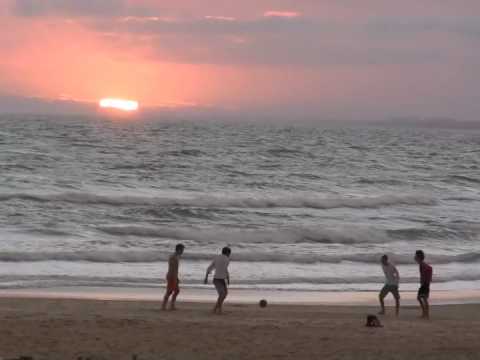
Nestled along the eastern coast of Uruguay, Cabo Polonio stands as a beacon of natural beauty and tranquil solitude. This remote village, accessible only by off-road vehicles through towering sand dunes, offers a respite from modern life and an unparalleled connection to nature. Despite its growing popularity among travelers seeking off-the-beaten-path destinations, Cabo Polonio retains an untouched charm that makes it a unique spot in South America.
#### A Journey into Tranquility
Getting to Cabo Polonio is an adventure in itself. Visitors typically leave their cars in a designated parking area outside the national park and embark on a journey in large, robust trucks capable of navigating the challenging landscape. This ride through the dunes is not just a means to an end but a preview of the area’s raw beauty.
As you arrive, the village greets you with its rustic appeal. There are no roads or street lights, and electricity is scarce, provided only by generators and solar panels. This lack of modern amenities is not a drawback but rather one of Cabo Polonio’s most enchanting features, allowing visitors to disconnect from their busy lives and reconnect with nature.
#### Nature’s Untouched Beauty
Cabo Polonio sits on Uruguay’s Atlantic coast within a national park that bears its name – Parque Nacional Cabo Polonio. The area is surrounded by pristine beaches that stretch as far as the eye can see, rocky shores, and shifting sand dunes. The rugged coastline is frequently battered by the Atlantic waves, creating dramatic sea vistas that are insanely photogenic under different lights of day.
One cannot talk about Cabo Polonio without mentioning its iconic lighthouse. Built in 1881, it offers breathtaking views from its summit – from endless ocean vistas to panoramic views of the village below and sprawling dunes around. Climbing this lighthouse during sunset provides one of the most serene experiences one can have here.
#### A Haven for Wildlife
For wildlife enthusiasts, Cabo Polonio is nothing short of paradise. The village is renowned for its large colonies of sea lions which reside on offshore rocks accessible for viewing from the coastline or via guided tours. These creatures are accustomed to human presence and can be seen lounging lazily or playfully interacting with each other.
The surrounding areas are also rich in birdlife making it an excellent spot for bird watching; enthusiasts might catch sight of oystercatchers, skuas, and even occasional penguins during certain times of the year.
#### Sustainable Tourism
Cabo Polonio’s approach to tourism heavily emphasizes sustainability and environmental preservation. Local regulations restrict overdevelopment to protect its unique ecosystem; there are no paved roads or overt commercialization here. Visitors are encouraged to respect this delicate environment by minimizing their environmental impact during their stay – adhering to paths, avoiding interfering with wildlife and taking back any litter.
Accommodation options range from rustic cabins that blend into their sandy surroundings to cozy posadas offering basic amenities like candlelight dinners under starlit skies—perfect for those looking for minimalistic yet charming lodging options.
#### Embracing Local Culture
The residents of Cabo Polonio live mostly off-grid lives but embody warmth toward visitors sharing their slice of paradise. Interaction with locals isn’t just inevitable but rewarding; artisans sell crafts inspired by ocean themes while small local eateries serve fresh seafood alongside Uruguayan classics.
Each year residents host various cultural events like workshops or music festivals which blend local traditions with contemporary expressions bringing together communities from around Uruguay and beyond.
### Conclusion
Cabo Polonio provides more than just a break from everyday life; it offers an immersive experience into simplicity surrounded by unspoiled natural beauty where time slows down enough for anyone visiting to reassess life’s rhythm according to nature’s pulse rather than digital ticks-tocks—a truly transformative travel destination not just seen but felt deeply.
